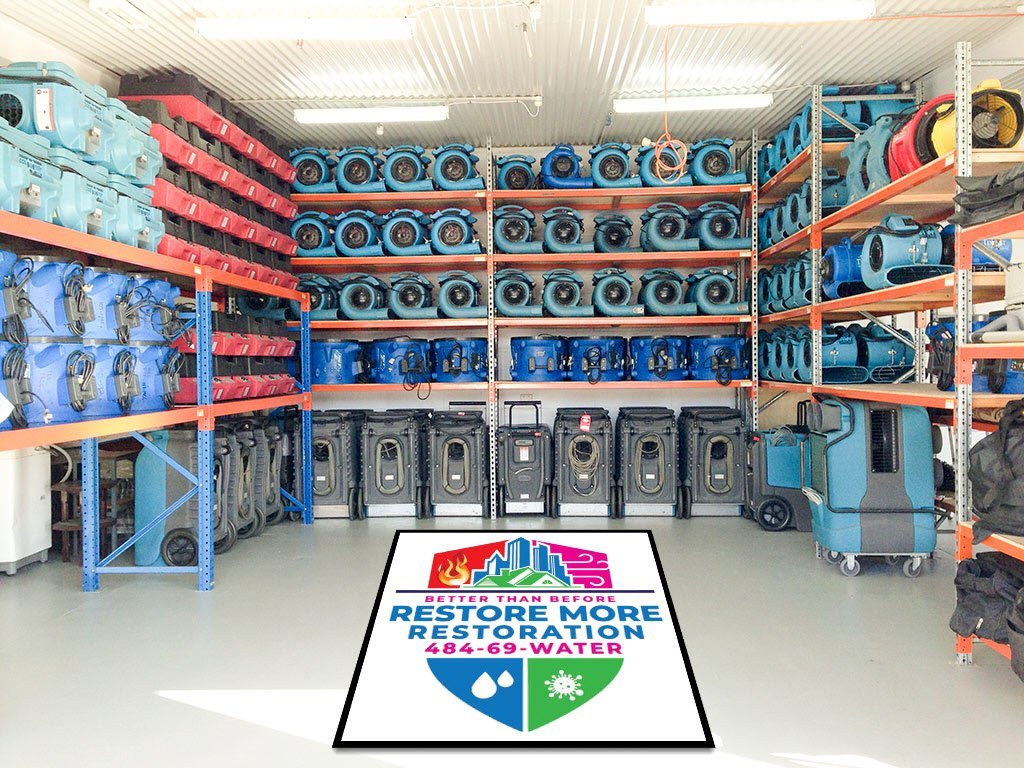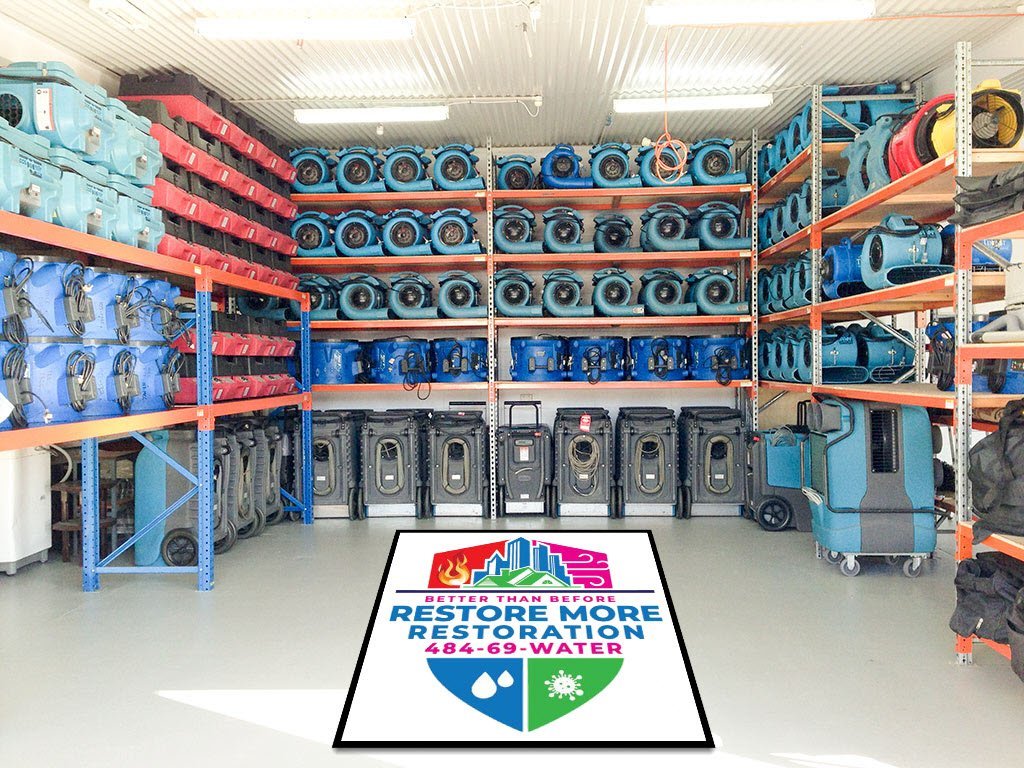What comes to your mind when you think about the unexpected surprises life throws at us?
Perhaps it’s an overwhelming sense of frustration, especially regarding something as disruptive as water damage. When this kind of emergency occurs, the last thing I want is to feel stressed.
Instead, I want to know that there’s a reliable solution at my fingertips. That’s where I find antimicrobials become a lifesaver. Learn More
Understanding Antimicrobial Treatment
Antimicrobial treatment is not just a buzzword; it’s an essential aspect of restoring environments affected by water damage. It refers to the application of substances that kill or inhibit the growth of microorganisms such as bacteria, viruses, fungi, and more.
This treatment is particularly crucial in areas exposed to excess moisture, which can be a breeding ground for these harmful pathogens.
My journey into this field started nearly ten years ago, and during that time, I have learned a great deal about the importance of acting swiftly and effectively when dealing with such challenges.
When it comes to widespread water damage, it’s crucial to focus on both immediate repairs and long-term health implications.
Why Is Antimicrobial Treatment Important?
The significance of antimicrobial treatment cannot be overstated. After water or flood damage, harmful microorganisms can begin to thrive in damp conditions, leading to health risks for anyone living or working in those affected areas. Those risks can include:
- Respiratory Issues: Mold and mildew can trigger allergies and other respiratory problems.
- Skin Reactions: Certain fungi and bacteria can cause skin irritations or infections.
- Digestive Issues: Contaminated water can harbor pathogens that lead to gastrointestinal distress.
Each of these conditions can escalate quickly, making the need for effective antimicrobial treatment more pressing.
Water Damage and Mold Growth
Water damage can occur for various reasons, such as natural disasters, plumbing failures, or even roof leaks. Regardless of the cause, the consequences are often similar: water accumulates and creates a perfect environment for mold and other microorganisms to flourish.
Types of Water Damage
Understanding the type of water damage involved is the first step in determining the appropriate treatment. Generally, there are three categories:
- Clean Water: This water poses no health risks, like water from a broken pipe.
- Gray Water: This may contain contaminants and pose health risks if ingested. Examples include water from shower drains or washing machines.
- Black Water: This highly contaminated water poses significant health risks, such as sewage overflow.
Each type of water damage requires a different level of remediation and antimicrobial treatment. Black water, for instance, will require much more stringent measures due to its hazardous nature.
The Antimicrobial Treatment Process
So, how does one effectively apply antimicrobial treatment after experiencing water damage?
Here’s a general step-by-step outline I’ve come to rely on through years of experience:
1. Assessment
The initial step involves a comprehensive assessment of the damage. I always aim to identify the source of the water and determine the extent of the damage. This stage is critical as it informs the appropriate remediation strategy.
2. Water Extraction
Once the assessment is complete, I extract any standing water. This process often employs specialized pumps and vacuums to recover as much moisture as possible. The quicker this step is completed, the better the outcome.
3. Drying
After extraction, drying is of utmost importance. High-velocity air movers and dehumidifiers play a vital role in this process. Ensuring that everything is dried thoroughly minimizes the chances of mold growth.
4. Application of Antimicrobial Agents
Once everything is dry, I apply the antimicrobial agents. This involves treating surfaces, such as walls, floors, and any items that may have been affected, to eliminate any trace of harmful microorganisms. This may include:
- Liquid Sprays: Direct treatment on surfaces.
- Fogging Machines: These disperse antimicrobial solutions as a fine mist to reach vulnerable areas.
5. Final Inspection
After the antimicrobial treatment, a thorough inspection is essential. I carefully check for any signs of mold growth or lingering moisture to ensure the environment is safe for reoccupation.
Choosing the Right Antimicrobial Treatment
As I navigated the challenges of providing effective treatment, I found that not all antimicrobial agents are created equal. Factors such as toxicity, environmental impact, and effectiveness become incredibly important.
Types of Antimicrobial Agents
Here are some of the common types of antimicrobial agents that I might choose from:
| Type | Description | Pros | Cons |
|---|---|---|---|
| Quaternary Ammonium | Commonly used in disinfectants | Effective against a wide range | It may require longer contact time |
| Hydrogen Peroxide | Breaks down into water and oxygen; eco-friendly | Non-toxic residuals | May require longer contact time |
| Sodium Hypochlorite | A strong bleach solution | Great for bacteria and mold | Strong odor, may discolor materials |
| Alcohol | Quick-drying solution | Good for quick disinfection | Flammable; may not be effective against all microorganisms |
Selecting the proper agent depends on the type of material being treated, the level of contamination, and, of course, the health and safety of occupants.
Safety Precautions
When I engage in antimicrobial treatment, safety is always a top priority. Everyone involved, myself included, must adhere to specific safety measures to avoid risks associated with toxic substances. Here are some precautions I find necessary:
Personal Protective Equipment (PPE): This includes gloves, masks, and goggles to protect against harmful fumes and contact with skin.
Ventilation: Ensuring the workspace is well-ventilated helps dissipate any hazardous vapors created during treatment.
Awareness: I always make sure everyone involved is aware of the risks and how to handle the antimicrobial agents safely.
The Role of a Professional Service
As someone who has built a team of dedicated professionals, I understand the peace of mind that comes with knowing I’m not alone during these processes. My experience allows me to locate the problem’s root cause and deliver effective, tailored solutions.
Why Hire a Professional?
- Expertise: Professionals come equipped with knowledge and skills often beyond the average homeowner’s capabilities.
- Equipment: Access to specialized tools and antimicrobial agents can make all the difference in remediation quality.
- Time-saving: Hiring professionals allows for quicker resolution, reducing the duration of stress and disruption.
Aftercare and Maintenance
Once the antimicrobial treatment is complete, it’s essential to maintain that environment to prevent a recurrence of mold or bacteria. Here are a few steps I recommend for aftercare:
Regular Inspections
I often advocate for regular inspections to identify potential leaks or moisture problems before they escalate. Catching issues early can save a lot of time and money down the line.
Moisture Control
Controlling moisture levels in homes or businesses, using dehumidifiers, ensuring proper ventilation, and promptly addressing condensation issues are crucial.
Understanding Environmental Impact
As I continue to grow my business, I realize that the environmental impact of the products and techniques I use has become increasingly important to me. Employing eco-friendly products whenever possible not only protects our planet but also the health of my clients.
Customer Satisfaction: A Personal Touch
One of the standout features of my operation is the commitment to customer satisfaction. I believe that empathy creates the foundation for effectively addressing concerns. My experience tells me how unsettling it can be to deal with water damage. My team and I ensure that every client feels understood and cared for by providing reliable and personalized service.
Communication is Key
I make it a point to maintain open lines of communication throughout the remediation process. Discussing progress, potential challenges, and solutions helps clients feel involved and reassured.
Tailored Solutions
Every situation is unique. I pride myself on offering customized solutions that cater to my client’s specific needs. Uniqueness resonates through my service, whether it’s a thorough antimicrobial process or preventive measures.

Conclusion
Life can throw unexpected challenges our way, and it’s okay to feel overwhelmed. What truly matters is how we respond to those surprises. We can restore our spaces to a safe and healthy state through effective antimicrobial treatment. My journey in this business has equipped me with a wealth of experience, but at the heart of it all is my commitment to helping others navigate through these trying times.
Ultimately, whether it’s a minor leak or a substantial water damage issue, understanding the importance of antimicrobial treatment can empower us to take control of our environments. It enables us to protect our health, our homes, and our well-being. And knowing that a dedicated and empathetic team is there to assist makes all the difference in the world.

